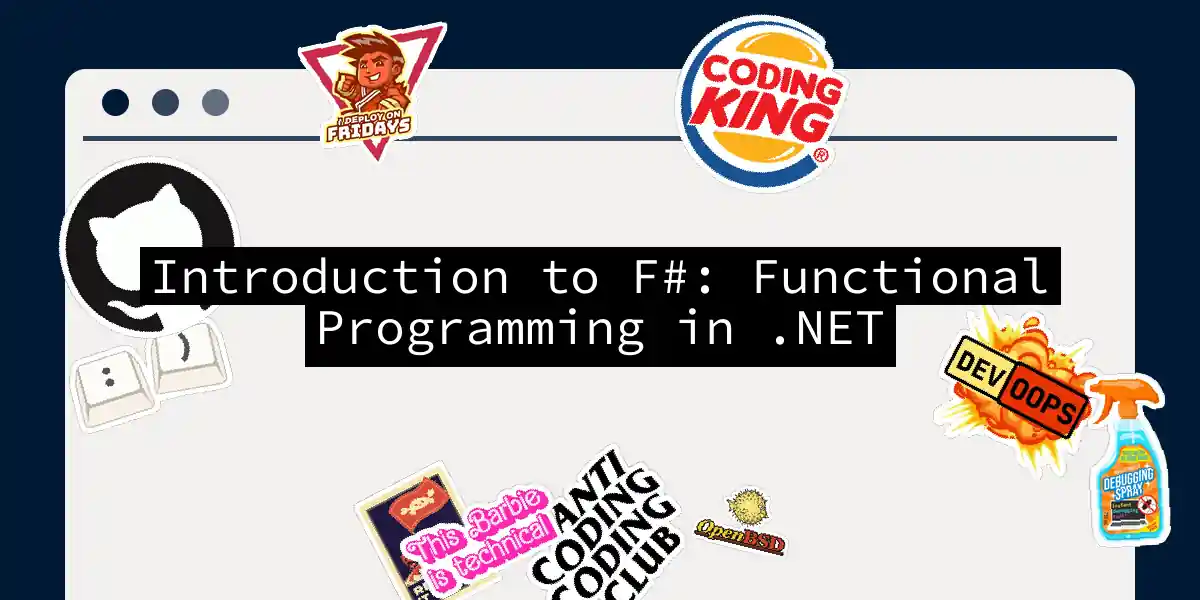Welcome to the World of F#
If you’re a .NET developer looking to spice up your coding life, you’re in the right place. Today, we’re diving into the wonderful world of F#, a language that will make you wonder how you ever managed without it. F# is not just another programming language; it’s a gateway to the realm of functional programming, where code is succinct, robust, and performant.
What is F#?
F# is an open-source, cross-platform, functional programming language that is part of the .NET ecosystem. It’s supported on Windows, Linux, and macOS, making it a versatile tool for any developer.
Why F#?
Before we dive into the nitty-gritty, let’s talk about why F# is worth your attention. Here are a few compelling reasons:
- Productivity: F# significantly increases productivity, especially in complex domains like finance. It’s not uncommon to see an order of magnitude increase in productivity when using F#.
- Correctness: With its strong type system, F# ensures that your code is more likely to be correct. This means fewer bugs and less time spent debugging.
- Performance: F# code is phenomenally fast. For example, recalculating an entire bank portfolio from scratch can be done in less than a second.
Functional Programming Concepts
Functional programming is all about functions and immutable data. Here are some key concepts you’ll need to grasp:
Functions
In functional programming, functions are the primary constructs. They map inputs to outputs without side effects.
let addOne x = x + 1
This simple function adds 1 to an integer. The type signature val addOne: x:int -> int tells you exactly what it does: it takes an int and returns an int.
Expressions
Expressions in F# produce values. Unlike statements, expressions are evaluated to produce a result.
let value = 1
let secondValue = value + 1
Here, secondValue is an expression that produces a new value, rather than mutating the existing one.
Immutability
Immutability is a cornerstone of functional programming. In F#, values are immutable by default, meaning they cannot be changed once created.
let value = 1
let secondValue = value + 1
In this example, secondValue is a new value, not a mutation of value.
Purity and Referential Transparency
Pure functions always return the same output for the same inputs and have no side effects. This property, known as referential transparency, makes your code predictable and easier to reason about.
let isOdd x = x % 2 <> 0
This function is pure because it depends only on its input and has no side effects.
Practical F# Programming
Let’s get our hands dirty with some practical examples.
Example 1: Sum of Odd Squares
Here’s how you can calculate the sum of the squares of odd numbers in a list:
let square x = x * x
let isOdd x = x % 2 <> 0
let sumOfOddSquares nums =
nums
|> List.filter isOdd
|> List.sumBy square
let numbers = [1; 2; 3; 4; 5]
let sum = sumOfOddSquares numbers
printfn "The sum of the odd squares in %A is %d" numbers sum
This code uses the |> operator to pipe the result of one function into another, a common pattern in F#.
Example 2: Working with Data Structures
Here’s an example of working with a simple data structure, a Shape type:
type Shape =
| Square of side: double
| Rectangle of width: double * length: double
let getArea shape =
match shape with
| Square side -> side * side
| Rectangle (width, length) -> width * length
let square = Square 2.0
printfn $"The area of the square is {getArea square}"
This code defines a Shape type and a function to calculate its area using pattern matching.
Integrating F# with Other .NET Languages
One of the best things about F# is its seamless integration with other .NET languages. Since both F# and C# compile to .NET Intermediate Languages (IL), you can use them together in the same project.
This integration allows you to leverage the strengths of both languages. For example, you might use F# for complex data processing and C# for the UI or other parts of your application.
Tools and Community
F# has a growing and vibrant community. Here are some tools and resources to get you started:
- SAFe Stack: A dotnet CLI template for building Single-Page Applications (SPAs) with a backend. It’s a great starting point for new projects.
- F# Software Foundation: A central place for the F# community to grow and learn together. It offers tutorials, examples, and resources to help you master F#.
- fsharpWorks: Offers trainings and consulting services from leading F# experts. Their courses cover a wide range of topics, from domain modeling to machine learning.
Conclusion
F# is more than just a language; it’s a way of thinking about programming. With its strong type system, immutable data structures, and functional programming concepts, F# can transform the way you approach software development.
So, why not give F# a try? It might just become your new favorite language. And remember, in the world of F#, code is not just about getting the job done; it’s about doing it with elegance and precision.
Happy coding
